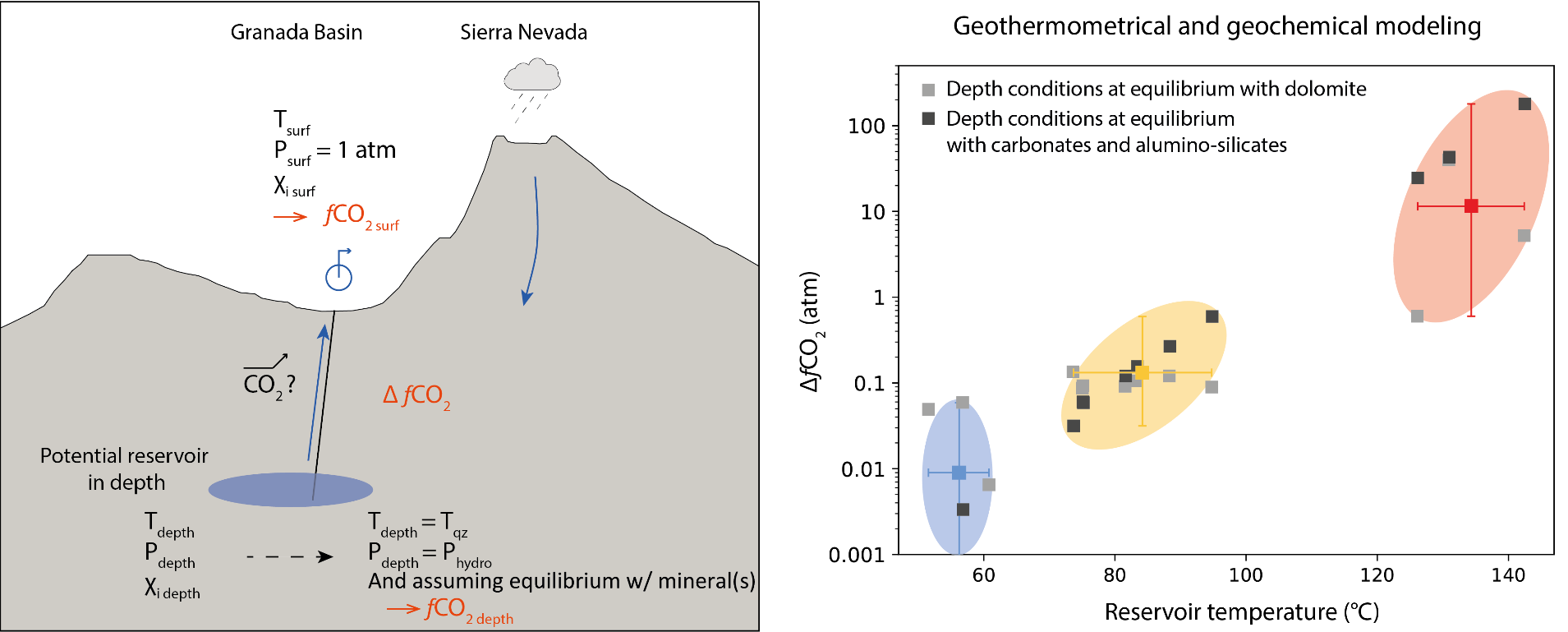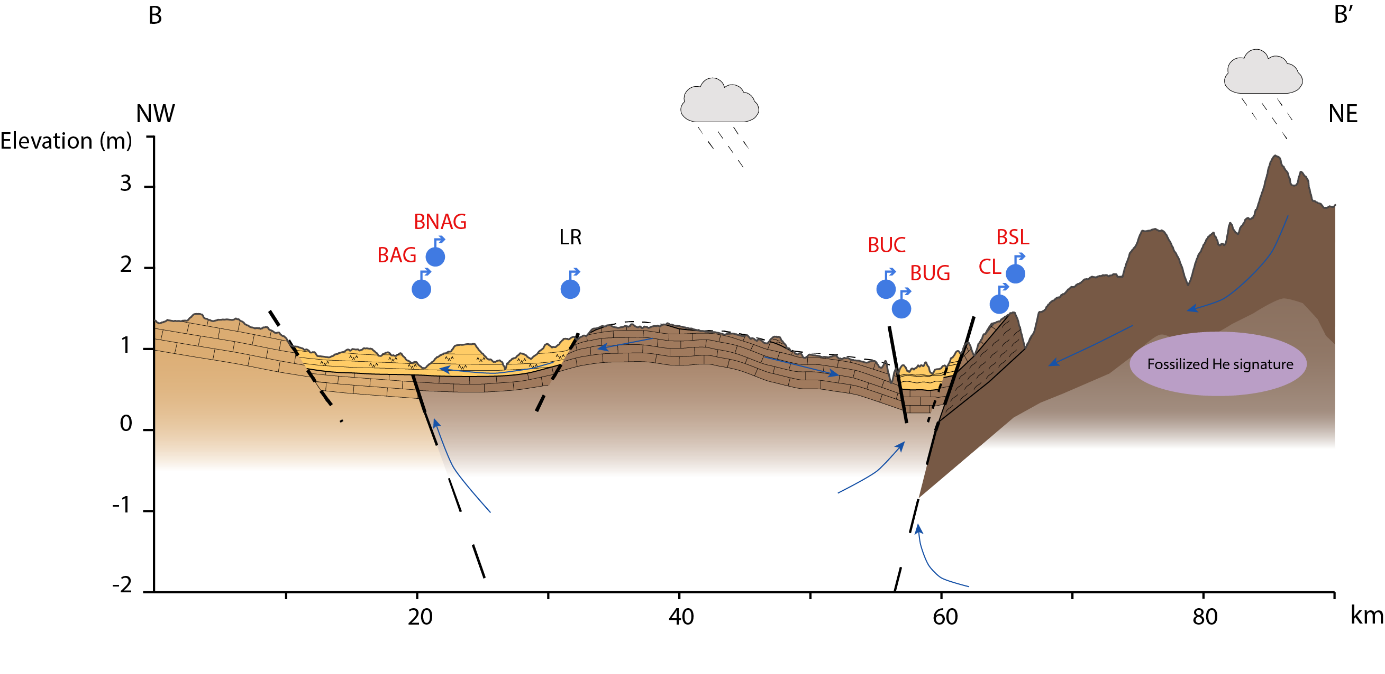09.03.2020
5 minutes of reading
A PhD research project conducted at IFP Energies nouvelles aimed to measure the impact of rocks on CO2 reactivity in fluids flowing in the Granada (Andalusia) sedimentary basin. The results are of interest to the energy production sector - particularly geothermal energy - and the challenges it faces in terms of carbon emissions.
Understanding the chemical reactions at work in geothermal energy: a challenge to overcome for the energy transition
Understanding fluid flow (liquid and gas) in sedimentary basins, both in terms of transport and reaction, is crucial in the field of energy production (geothermal energy, oil and gas production, CO2 geological sequestration) and water management.
Recent examples of CO2 and H2S degassing phenomena during geothermal energy production have been problematic. Yet, in the context of the energy transition, geothermal energy production is seen as a clean option since it does not emit carbon and offers a long-term eco-friendly alternative to fossil fuels.
The evaluation of chemical reactions likely to generate or consume CO2 in geothermal production systems thus appears to be necessary to effectively predict the magnitude of these phenomena within the framework of future projects. However, evaluating and constraining groundwater flows in sedimentary basins remain challenging, particularly due to the multi-scale heterogeneity of the system, the diversity of fluid types present, and the complexity of the chemical reactions encountered.
The Granada Basin: an ideal environment for studying fluid-rock interaction
The aim of a PhD research project conducted at IFPEN [1] was to monitor fluid flow and reactivity in a sedimentary basin using the geochemistry of inorganic fluids. The project was centered around the Granada Basin, an intra-mountain basin within the Betic Cordillera (Andalusia, Spain) characterized by recent active geodynamics, numerous thermal springs and the presence of evaporites in the continental basement and sedimentary filling. The basin is of significant interest when studying fluid-rock interaction given fluid flow on various scales and groundwater mineralization contrasts.
A new hypothesis on the gas-water-rock system
The research began by looking at the isotopic composition of the helium contained in bubbling and dissolved gases in natural water to evaluate the gas-water-rock system and test the possible influence of the underlying lithosphere on the thermal springs observed in the region.
The He isotopes revealed a dominating radiogenic component, with a mantle helium contribution of 1%. In addition, the evaluation of helium transport mechanisms in the crust (the Earth’s outer layer) reveals that the crustal system of the Betic Cordillera is currently separated from the mantle system.
These results led to the development of a new hypothesis: the slight excess of 3He observed in current fluids may result from a mantle fossil signature, diluted by radiogenic crustal production over time [2].
Mineral assemblages, temperature and fugacity of CO2: a demonstrated relationship
The geochemical composition of fluids in low- and medium-enthalpy geothermal systems present in the Betic Cordillera was then measured and described on the basis of interactions occurring between the fluids and rocks. This study, combining several geothermometrical and geochemical methods, revealed a close relationship between temperature, the fugacity of CO2 (fCO2) in the reservoir and mineralogical assemblages [3].
The results highlighted the impact of mineral buffers, which form the sedimentary rocks and metamorphic basement, on CO2 reactivity. They also paved the way for a discussion on geothermal systems and their natural CO2 emissions, at a time when the latter are being considered as a source of sustainable energy. (figure 1).
Possible flow paths for groundwater highlighted
More in-depth research focusing on water reactivity, based on sampling and analysis of the composition of numerous springs and wells, provided an insight into groundwater flows for the entire Granada Basin. They showed that the chemical composition of groundwater evolves from carbonate-rich on the edges of the basin to sulfate- and chloride-rich in the center of the basin.
The evolution of groundwater saturation with respect to carbonates, alumino-silicates and sulfates (barite, celestite and gypsum) (figure 2) made it possible to highlight possible flow paths towards the principal deposits at the center of the basin (figure 3), on the basis of a conceptual reactive transport model.
Scientific contacts: Xavier Guichet, Claire Lix3
References :
[1] Lix C. (2019). Present-day fluid-rock interaction in a sedimentary basin: Study case of the Granada Basin (Betic Cordillera, Spain). Thèse soutenue le 15 mars 2019.
[2] Lix C., Zuddas P., Inguaggiato C., Guichet X., Benavente H., and Barbier M. (2018). New insights on Betic Cordillera geodynamics from gas geochemistry. Geochemistry, Geophysics, Geosystems, Vol 9, p. 4945-4956, .
[3] Lix C., Zuddas P., Guichet X., Benavente H., Luque J.A., and Barbier M. (2020). Role of CO2 in low to medium enthalpy geothermal systems in the Central Betic Cordillera. Science of the Total Environment, Vol 705, doi: 10.1016/j.scitotenv.2019.135652.
> To find out more : geothermal energy



BAG Baños Alhama de Granada BUG Baños Urquizar Grande
BNAG Baños Nuevo Alhama de Granada BUC Baños Urquizar Chico
LR Los Rosas CL Capuchina de Lanjaron
BSL Baños Salado de Lanjaron
1. Sedimentary rocks formed by mineral salts precipitated from saline solutions and resulting from evaporation.
2. Relating to the mantle, the intermediate layer between the crust and the Earth’s core.
3. Currently with the Groupement de Recherche Eau, Sol, Environnement (GRESE or Water, Ground, Environment Group) at the University of Limoges.






